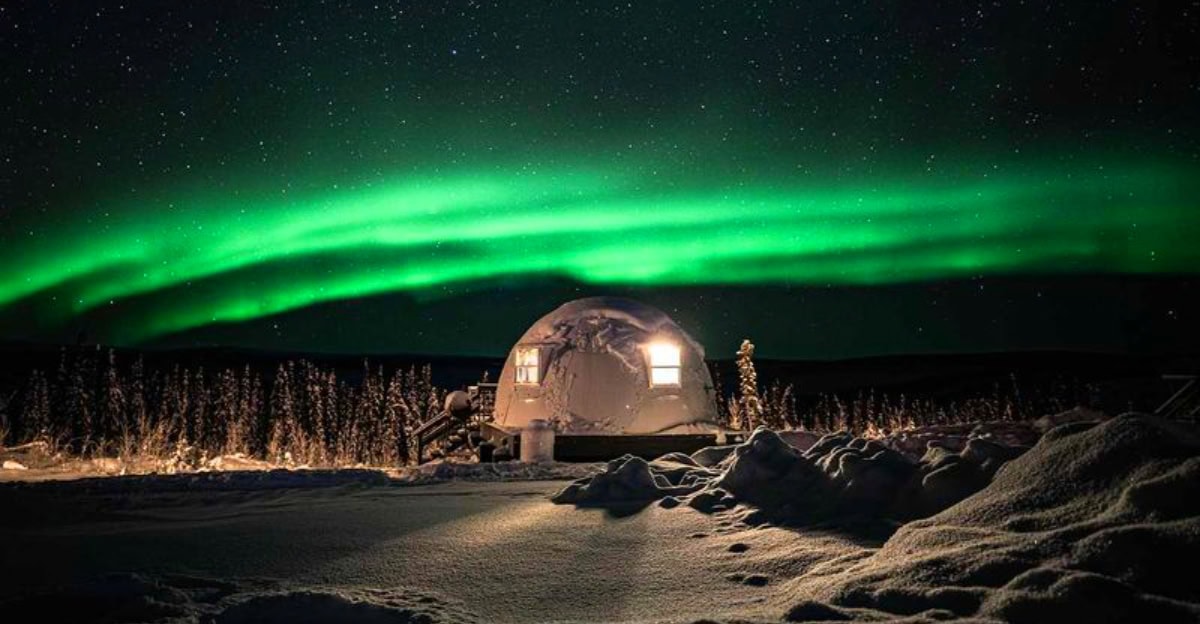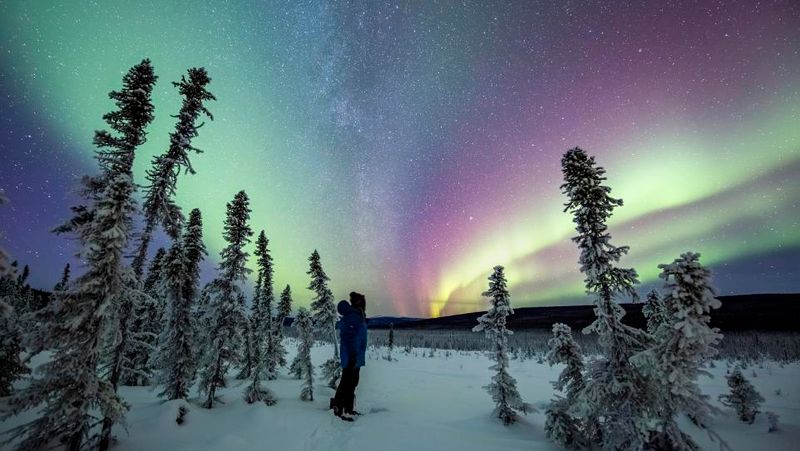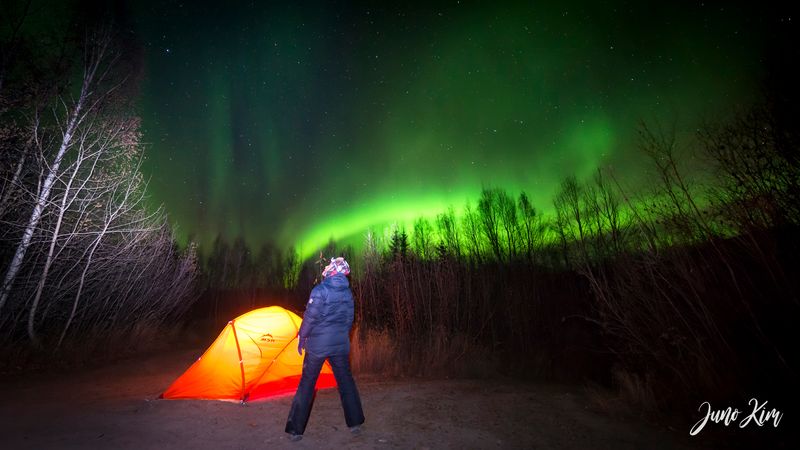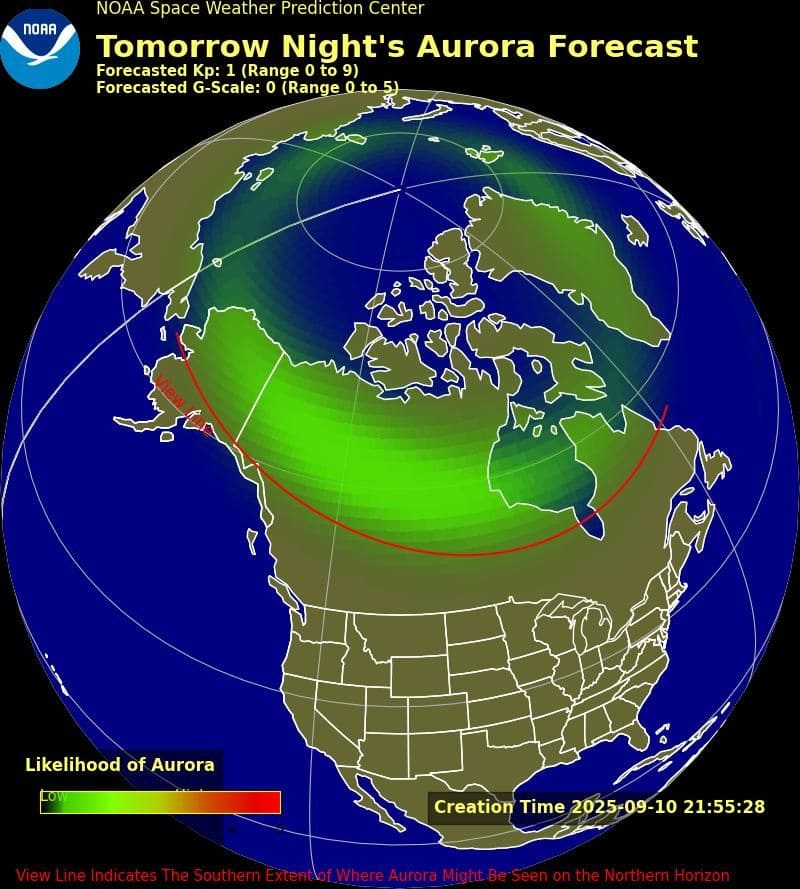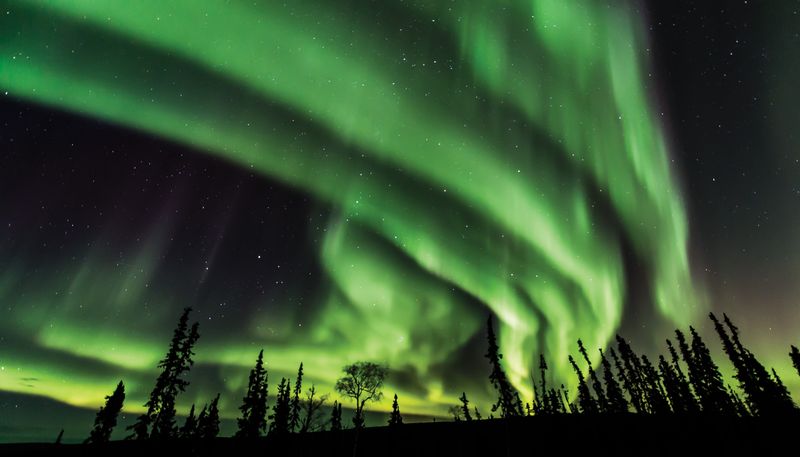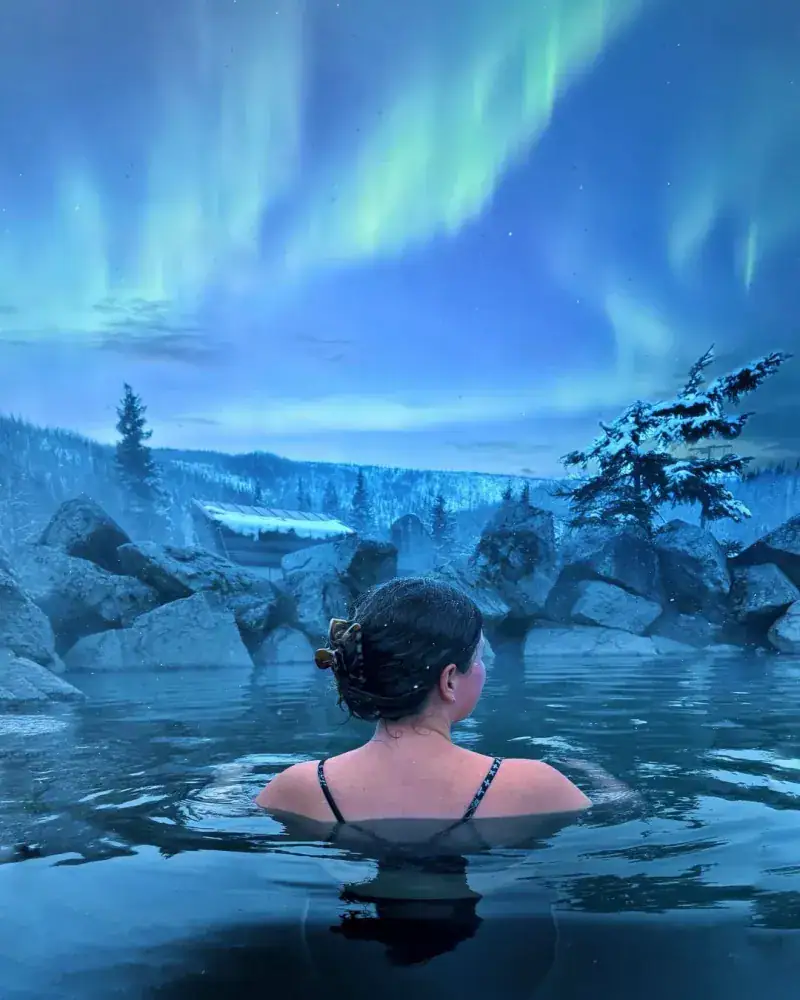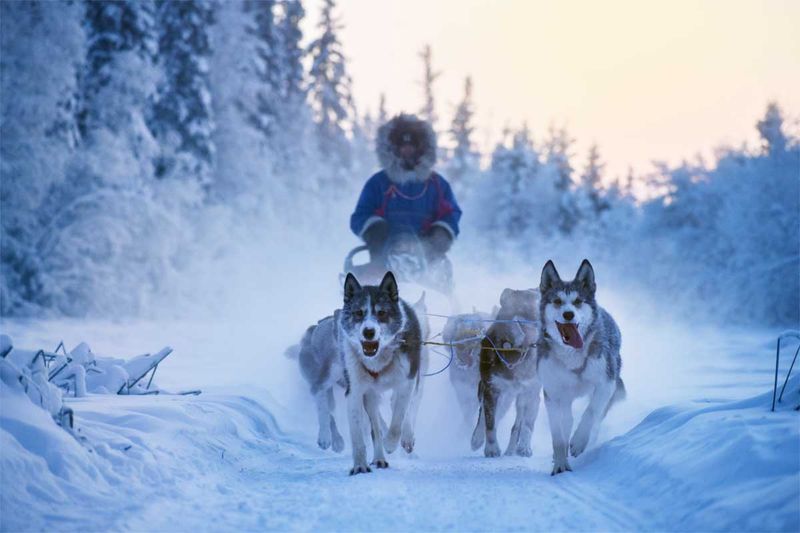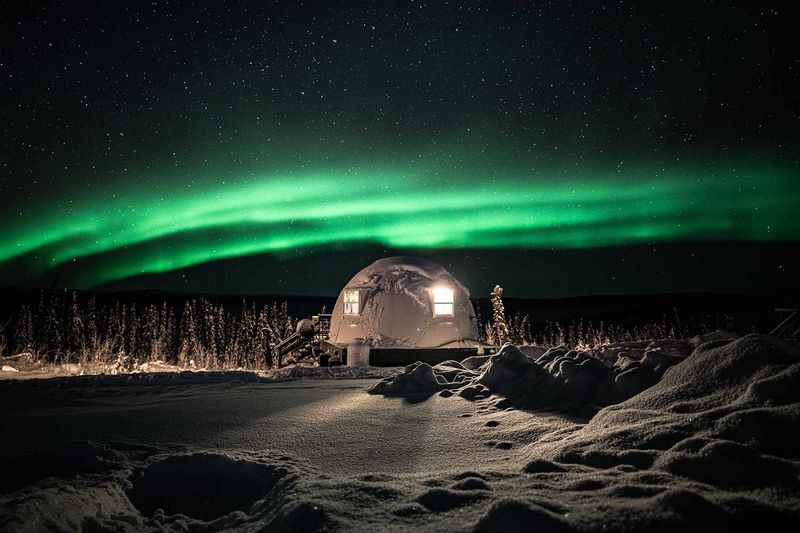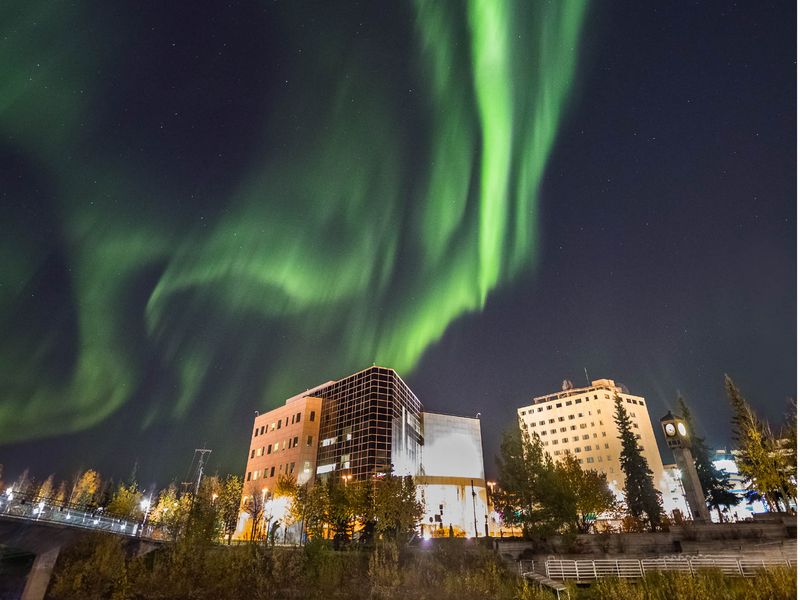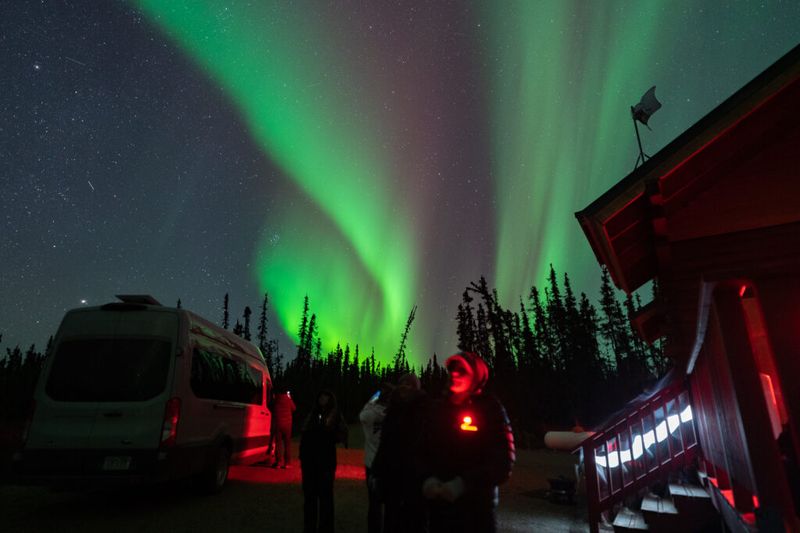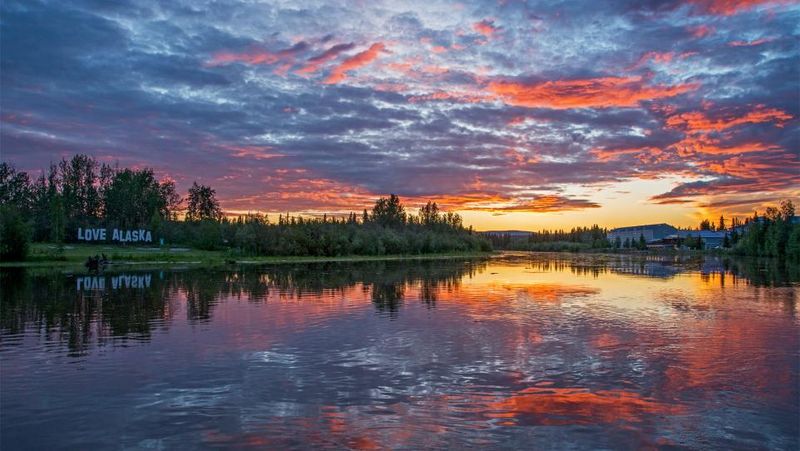Discover the enchanting experiences awaiting you in Fairbanks, Alaska. Known for its captivating aurora borealis displays, this destination offers a myriad of activities throughout the year, including visits to hot springs and exhilarating dog mushing adventures. Plan your visit around the aurora season and enjoy an unforgettable journey under the northern lights.
1. Know the real “aurora season” vs. 24-hour daylight
Fairbanks, Alaska is a prime location for aurora viewing, but timing is crucial. The aurora occurs year-round, but to see it, dark skies are essential. Fairbanks’ official Aurora Season runs from August 21 to April 21. During the summer, the Midnight Sun brings continuous daylight, making the sky too bright for aurora watching. Plan your visit during late August to April for optimal aurora hunting, and enjoy the midnight-sun activities during the rest of the year. This unique phenomenon offers a beautiful contrast of experiences, showcasing the region’s extraordinary celestial wonders.
2. Best overall months: September–March
For the best aurora viewing, consider visiting Fairbanks between September and March. Fall, from late August to October, offers milder temperatures and plenty of dark hours. Deep winter, November to February, provides the longest nights, ideal for darkness but with colder temperatures. March to early April presents dark evenings often accompanied by clearer weather and an equinox boost in geomagnetic activity, enhancing auroras. This period is perfect for enthusiasts seeking the spectacular northern lights, providing an exceptional blend of seasonal charm and thrilling celestial displays.
3. Why Fairbanks works so well
Fairbanks is strategically located under the Auroral Oval, making it an exceptional spot for aurora viewing. The area benefits from low precipitation and many clear nights, greatly enhancing visibility. Local tourism data suggests that on clear, dark nights, auroras are visible approximately four out of five nights during the season. This optimal combination of geographical advantage and natural conditions makes Fairbanks a favored destination for those seeking the awe-inspiring beauty of the northern lights, drawing visitors from all corners of the globe.
4. Use the right forecast tools
Utilizing the right forecast tools is key to successful aurora viewing. Essential resources include the UAF Geophysical Institute Aurora Forecast for nightly, Alaska-specific predictions, and the NOAA SWPC Aurora Dashboard for near-term space-weather conditions. The Explore Fairbanks Aurora Tracker matches aurora and weather conditions to six local viewing spots. Additionally, understanding the Kp index (ranging from 0 to 9) can help set expectations for aurora activity. These tools provide valuable insights, enhancing the aurora hunting experience for enthusiasts and newcomers alike.
5. Easy local viewing spots (drive-yourself)
Fairbanks offers several classic, light-pollution-free vantage points for self-guided aurora viewing. Notable locations include Murphy Dome, known for its expansive horizons, Cleary Summit, located about 20 miles north, and Wickersham Dome in the White Mountains. When venturing to these spots, it’s essential to monitor winter road conditions and ensure your vehicle has a full tank. These sites provide stunning, unobstructed views of the night sky, allowing visitors to immerse themselves in the breathtaking spectacle of the aurora borealis.
6. Hot soak + lights: Chena Hot Springs
Chena Hot Springs, approximately 60 miles from Fairbanks, offers a unique combination of relaxation and aurora viewing. Open year-round, the resort allows guests to soak in outdoor hot springs while scanning the sky for northern lights during aurora season. Additionally, the on-site Aurora Ice Museum, maintained at 25°F (-7°C), is open 365 days a year, making it a worthwhile visit even in summer. Pool facilities typically remain open from 7:00 a.m. to 11:45 p.m., providing ample opportunities for a dreamy, rejuvenating experience under the Alaskan sky.
7. Dog mushing in every season
Dog mushing in Fairbanks offers excitement throughout the year. During winter, enjoy the thrill of riding a traditional sled, while in summer and fall, many kennels switch to wheeled carts. Visitors can also partake in kennel tours and enjoy puppy time. Reputable, long-running outfits near Fairbanks include Trail Breaker Kennel, Black Spruce Dog Sledding, and Paws for Adventure. This activity provides a unique and engaging way to explore the Alaskan wilderness, offering an unforgettable adventure for visitors of all ages.
8. Where to stay if you want “wake-up calls” or glass-roof views
For those seeking an immersive aurora viewing experience, select accommodations in Fairbanks offer northern lights wake-up calls. Pike’s Waterfront Lodge is one such example. For a splurge-worthy adventure, Borealis Basecamp, approximately 25 miles from town, provides glass-roofed igloos or cubes, allowing guests to watch the sky from the comfort of their rooms. These unique lodging options enhance the aurora experience, providing unparalleled views of the celestial spectacle while ensuring a cozy and memorable stay.
9. Build your trip around darkness, not cold
When planning your Fairbanks aurora viewing trip, focus on darkness rather than cold. Late August to October and February to March offer a balance of dark evenings and generally friendlier temperatures while still providing excellent aurora activity. Utilize the Aurora Tracker to align cloud cover with aurora odds, maximizing your chances of witnessing a stunning display. By considering these factors, you can enjoy the magic of the northern lights without the harshest winter conditions, creating a comfortable and unforgettable adventure.
10. What time of night to look
Timing is crucial for aurora viewing in Fairbanks. Plan to be out from approximately 10 p.m. to 2 a.m. for the best chances. In fall, you may start earlier, while in spring, later hours can be beneficial. Aurora displays often pulse in waves, so patience is essential over quick glances. The Geophysical Institute highlights the importance of clear, dark skies over specific hours, emphasizing flexibility in your schedule to capture these celestial wonders in their full glory.
11. Safety and etiquette basics
Safety and etiquette are paramount when aurora viewing in Fairbanks, especially in mid-winter. Dress warmly, with face, hand, and foot protection. Use pullouts instead of road shoulders and keep headlamps and car lights low around other viewers. Never trespass to get the perfect shot; instead, bring a tripod and spare batteries as cold temperatures drain them quickly. Respectful behavior ensures a safe and enjoyable experience for everyone seeking to capture the enchanting northern lights.
12. Summer in Fairbanks if auroras aren’t visible
During the summer months, when auroras aren’t visible, Fairbanks offers a treasure trove of activities under the Midnight Sun. From mid-May to late July, the city experiences approximately 70 days of continuous sunlight. Visitors can enjoy activities like Chena Hot Springs day trips, summer kennel tours, riverboat rides, hiking, and late-night golf or photography. This season presents a beautiful opportunity to explore the Alaskan wilderness in a different light, offering endless adventures beneath the sunlit sky.
